Nail Fungus Laser Treatment: What You Need To Know
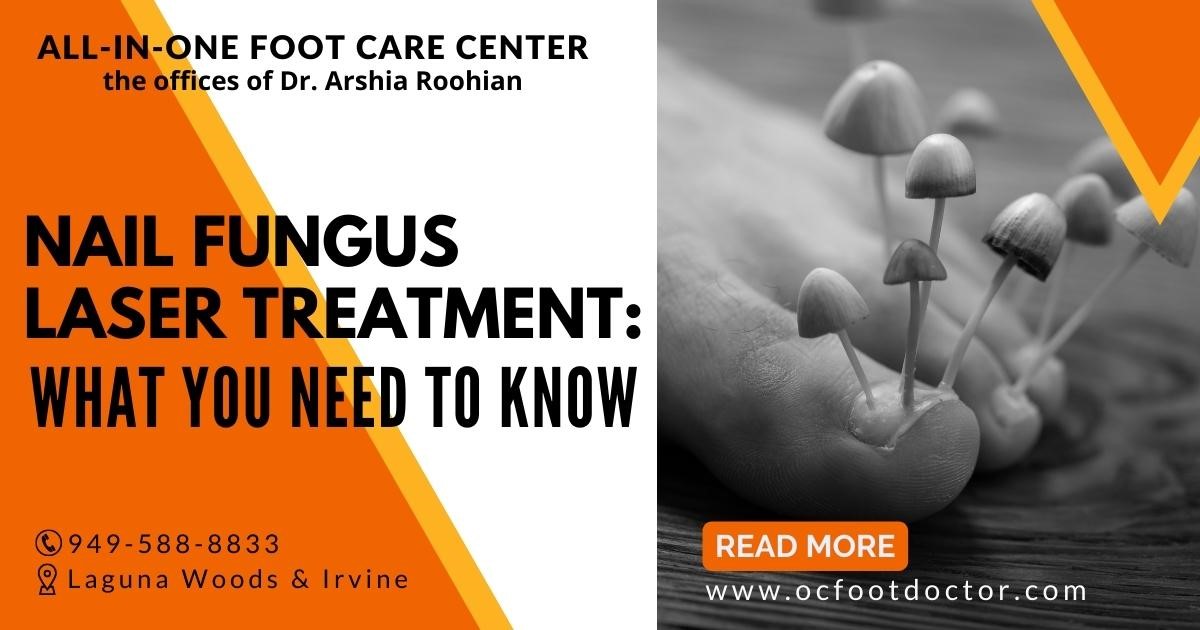
Researchers are still assessing whether laser treatment is effective in treating toenail fungus, which causes thickened, separated, and discolored nails.
Toenail fungus, also called onychomycosis, is very common. Nearly everyone can get it.
It may be possible to stop fungal growth and help clear the infection with laser therapy.
In this article, we discuss laser treatment for nail fungus, including what to expect, its effectiveness, risks, and alternatives.
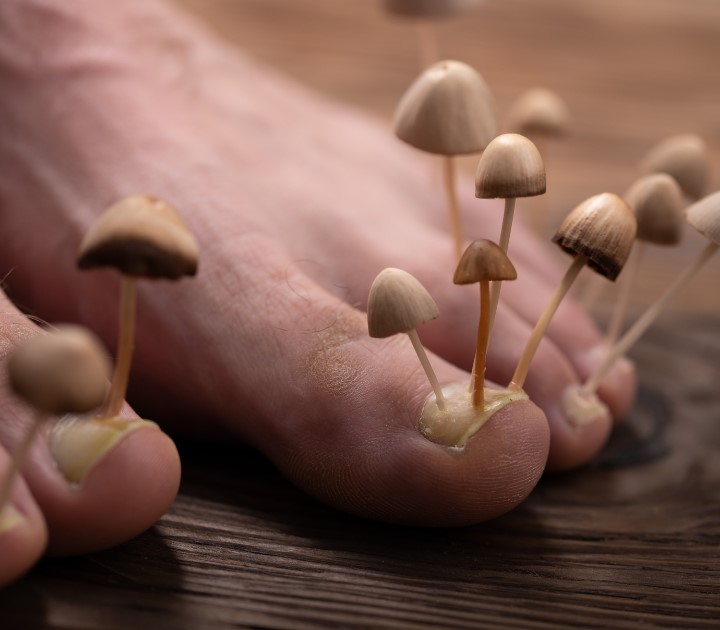
Laser nail fungus treatment: what is it?
Several types of laser treatments are available to treat nail fungus, all of which may affect how well the therapy works.
Nail fungus was first treated with lasers in the 1980s. Since then, new types of laser treatments have gradually become available.
Laser treatment may be most beneficial for the following groups:
- Diseased kidneys and livers
- Diabetic individuals
- Medications intolerance in older adults
A CDC Trusted Source recommends that nail fungus be treated early in order to improve patients' outcomes. The CDC also warns that if left untreated, nail fungus can spread to other parts of the body.
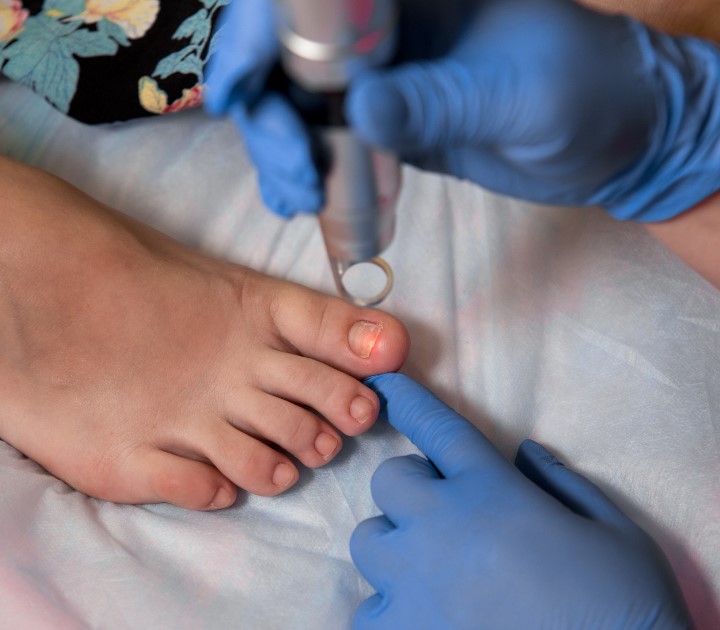
Nail fungus laser treatment costs vary depending on:
- Visiting a clinic
- Place of origin
- Utilized equipment
- Session count
According to some estimates, the cost of the procedure may range from $200-700 per session. It is important to contact the clinic before scheduling to determine the cost and how many sessions will be required. Insurance may not cover the costs if the procedure is considered cosmetic.
Expectations
According to some experts, laser treatment removes nail fungus by absorbing light into the nail and causing damage or death to the fungus cells.
It is unlikely that the procedure will cause any discomfort to most people.
Getting ready
Preparation is usually not necessary, though sunscreen may be recommended by some clinics.
Procedural steps
The following can be expected during a procedure:
- Remove your shoes and socks before sitting in a chair
- On the affected hand or foot, have the technician shine light on each nail
- Lasers may generate some heat
Approximately 30 minutes should be required for the process.
The recovery process
Following each session, a person can return immediately to their usual activities. However, it may take up to 2 months for the results to become apparent.
The rest of the story
In addition, the following factors should be considered:
- Most people require at least two sessions, separated by five to six weeks
- About two months may be needed for results
- In the affected area, all nails are treated
- In conjunction with the procedure, creams may be needed
- It can take up to six months for fingernails to grow back completely
- A complete regrowth of toenails may take 12 to 18 months
Efficacy
Laser treatment for nail fungus is not proven to be safe and effective, according to the American Academy of Dermatology Association (AAD).
In a meta-analysis published in 2019, laser therapy was found to be effective and safe for treating nail fungus.
Among several types of laser therapy, CO2 laser therapy showed the best overall results - the 1064-nm Nd:YAG laser had a high cure rate and a good safety profile.
A laser treatment reportedly achieved a success rate of about 63% compared with medications of the same type, however medication use is associated with side effects. Other types of lasers may also be effective and safe.
Prior to scheduling a session, one should inquire about the specific lasers that the clinic uses and how successful their sessions tend to be.
Aspects of risk
Generally, laser treatments are safe. Some patients experience mild discomfort or heat during treatment.
The advantage of laser therapy is its reduced risk. Oral medications can cause liver damage, kidney damage, or gastrointestinal problems.
Children, pregnant women, and individuals with underlying conditions may be safer from laser treatment.
Treatment alternatives
An established treatment for nail fungus may be recommended by a dermatologist. Additional treatments include:
- According to the doctor's instructions, the cream is applied directly to the nail.
- Antifungal medications are a more aggressive form of treatment that can be prescribed by a healthcare professional.
- Combined therapy: A cream and an oral medication are used in this approach.
- If the fungus is severe or does not respond to other treatments, a healthcare professional may remove the nail surgically or chemically.
In order to achieve the best results, people must apply creams and take medications according to instructions. Forgetting to apply the cream or taking the medication can lead to an infection that worsens or doesn't improve as expected.
An overview
Although the AAD still views laser therapy as an unproven treatment, studies show that it is effective and safe for some at-risk populations, including those with kidney and liver disease.
In some cases, laser therapy may not be covered by insurance, so it is important to discuss the cost with the service provider as well as how many sessions will be necessary.
An overview of nail fungal infections
It is normal for fungus to exist on the body, but it can become infected when it grows too fast. Nail fungal infections can include onychomycosis and tinea unguium, which can be managed with oral or topical medications, as well as home remedies.
Tinea unguium and onychomycosis are also names for these infections.
Around 50% of nail abnormalities are caused by nail fungal infections.
Infections can affect both fingernails and toenails, causing discoloration and thickening of the nail, as well as crumbling edges.
Approximately 10 percent of the adult population suffers from nail fungus infections. We've outlined common causes, treatments, and symptoms of nail fungal infections here.
Here are some quick facts about nail fungal infections:
- The condition is caused by microscopic fungi in the nails.
- Toenails and fingernails can be affected, but feet are more commonly affected.
- A nail debris examination is carried out to diagnose the problem.
Taking care of
Over the counter creams and ointments have not proven to be very effective in treating nail fungus infections. There are oral antifungal medications, topical ointments, and alternative therapies available for treating nail fungus infections.

Nail fungus infection can be treated with oral medications such as:
- Tamiflu (terbinafine)
- itraconazole (Sporanox)
- Diflucan (fluconazole)
Before the infected nail is fully replaced with an uninfected nail, it typically takes up to four months.
An extreme case is the removal of the entire nail by a physician.
Remedy options at home
Despite appearing to clear nail fungal infections, topical treatments are not always effective.
Nail fungus can also be treated at home with the following remedies:
- It has been suggested that Vicks VapoRub might be beneficial in treating nail fungus in a 2011 study.
- Compared to ciclopirox, a prescription antifungal treatment, snakeroot extract is as effective at treating nail fungus as a 2008 study conducted by Trusted Source.
- A combination of oregano oil and tea tree oil can increase the possibility of an allergic reaction or irritation since the latter contains thymol, which has antifungal properties.
- The same gases present in the ozone layer have been infused into olive oil and sunflower oil. This type of oil has been shown to be effective against nail fungus in numerous studies. According to one study, ozonized sunflower oil had greater clinical effects than ketoconazole, an antifungal medication prescribed.
In addition to Australian tea tree oil, vinegar, listerine, and grapefruit seed extract, alternative medicines are also used to treat nail fungal infections. However, these products are not backed by scientific evidence.
- Taking preventative measures
- Keeping your hands and feet clean is one of the best ways to avoid nail fungus infections. Here are some tips:
- Maintaining short, clean, and dry nails
- Socks with a breathable material, usually synthetic
- Spraying or powdering antifungal agents
- Preventing overexposure to water by wearing rubber gloves
- Keeping nails free of picks and bites
- Public places and swimming pools require shoes or sandals
- It is important to ensure that the tools in your manicure or pedicure salon are properly sterilized
- Reducing the use of artificial nails and nail polish
- If you touch nails that are infected, you should wash your hands
- Socks and shoes should not be shared
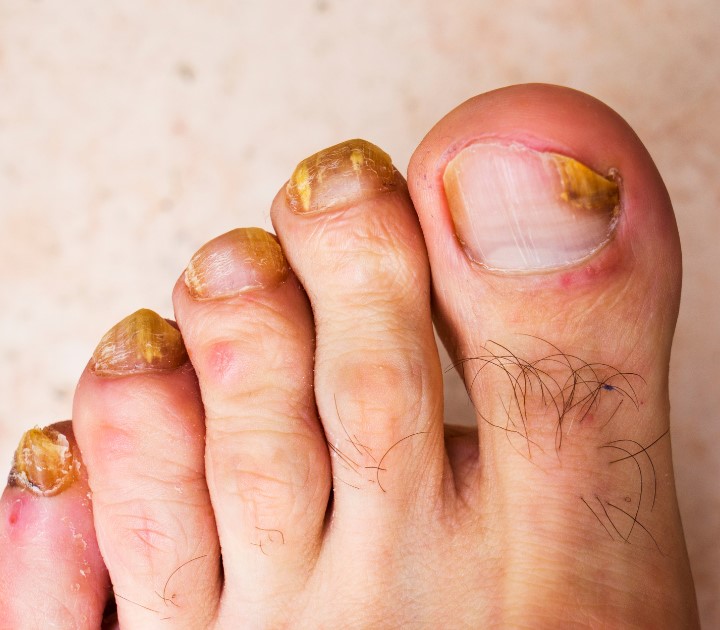
Factors that cause
Nail fungal infections are caused by microscopic organisms called fungi, which cannot survive in sunlight.
Typically, nail fungal infections are caused by dermatophytes (such as Candida). However, some yeasts and molds, such as:
- Most nail fungal infections are caused by Trichophyton rubrum, a dermatophyte.
- The interdigital trichophyton.
- There is a condition called epidermophyton floccosum.
- A violaceous fungus.
- There is a microsporum called Microsporum gypsum.
- A toxin that causes tonsillitis.
- Sudanese Thrichophyton.
Mold can be caused by the following factors:
- A neocytalidium
- The scopariopsis
- Species of Aspergillus
The fungi grow best in warm, moist environments provided by the nail. They usually enter the skin through tiny cuts or small spaces between the nail and nail bed.
Factors that increase risk
Infections of the nails caused by fungi are more common in men than women, as well as in the elderly. Other factors that increase your risk of nail fungal infection include:
- Circulation is impaired
- The growth of nails is slow
- Fungal infections in the family
- Excessive sweating
- An environment that is humid or moist
- Placing artificial nails on
- Ventilation is prevented by wearing socks and shoes
- Showers, swimming pools, and gyms are all damp places to walk barefoot
- Skin or nail injuries or infections
- A weakened immune system, diabetes, AIDS, circulation problems
- Shoes that crowd the toes
- Performing exercises that cause repeated minor trauma to the hyponychium, where the fingertips attach to the nails
As the body ages, blood circulation slows and nails grow slower, making older adults more susceptible to nail fungus infections.
- Asymptomatic
- A fungus-infected nail typically looks like this:
- Increased in thickness
- Fragile
- The crumbled
- Bruised
- A distortion
- Irritating
- Yellowish or darker in color
Also possible are:
- Inflammation of the nail bed - hyperkeratosis
- Lateral onychomycosis characterized by yellow or white streaks
- Symptoms of proximal onychomycosis include yellow spots on the nail bottom
- Onycholysis occurs when the nail bed separates from the infected nail
Toes or fingers may experience pain from fungal infections, and they may even smell foul.
The fungus may also cause skin lesions called dermatophytes, which look like rashes or itching on parts of the body not infected with the fungus.
Identifying the disease
The doctor usually examines debris from under the nail in order to diagnose nail fungus infections. Nail scrapings will be used for tests, including potassium hydroxide (KOH) smears and fungal cultures. The KOH test can be performed quickly, while the fungal culture can take weeks.
There are several conditions that can present with similar symptoms to fungal infections of the nails, including psoriasis, lichen planus, contact dermatitis, trauma, nail bed tumors, eczema, and yellow nail syndrome.
A look ahead
The prognosis for fungal nail infections is usually good if treated promptly for patients with diabetes who are susceptible to complications. Despite being unpleasant or irritating, most nail fungal infections can be successfully treated without complications after treatment.
Complications can include nail damage, permanent loss, or spread of the infection. Cellulitis is also a possibility in some extreme cases. Treatment can take a long time to fully cure the infection.
A number of the treatments and home remedies listed in this article can be purchased online. Before trying any new treatment, speak to a doctor.
- Lamisil can be purchased online.
- Vicks VapoRub can be found here.
- Snakeroot extract is available online.
- Oregano oil can be purchased online.
- Sunflower oil can be purchased online.
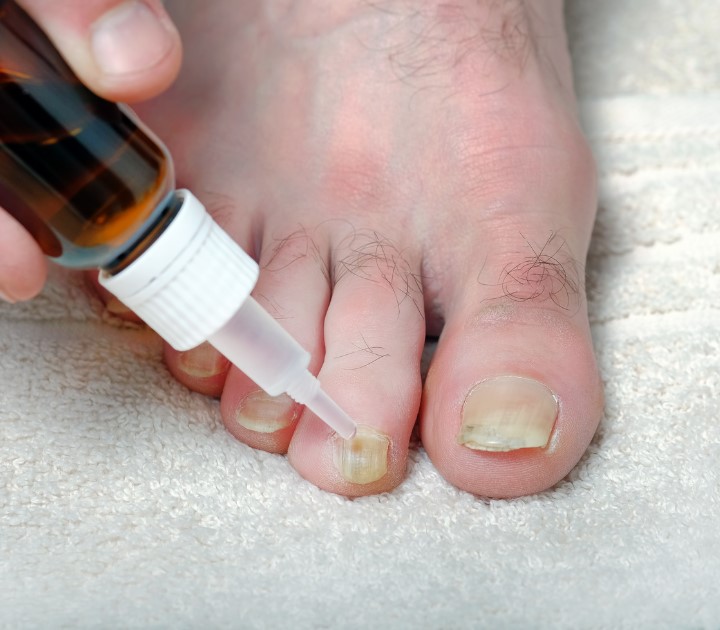
What are the best ways to get rid of toenail fungus at home?
It's common for people to use home remedies to treat toenail fungus, including baking soda, menthol products, etc. However, home remedies often aren't effective at preventing infections. Medical treatment may be needed instead.
Onychomycosis is a fungal infection that causes discoloration and thickening of the toenails. It is contagious, meaning the infection can spread from one toe to another.
Many types of fungi can cause fungal nail infectionsTrusted Source. These infections can be difficult to treat and usually do not disappear without prescription-strength antifungal medications, such as antifungal pills. While these medications are effective, they can cause unpleasant side effects, including nausea, vomiting, and other skin problems.
Toenail fungus is often treated at home with home remedies, however, these remedies are often ineffective. While they can suppress mild cases, they will not be able to prevent infections. People may instead consider using certain remedies in addition to prescription antifungal medications.
Toenail fungus can be treated at home with many popular methods and their effectiveness will be discussed in this article.
Sodium bicarbonate
Toenail fungus may be treated with baking soda since it can help absorb moisture. Additionally, it may possess fungistatic properties, which means that it does not kill fungi but can prevent them from growing. According to a small older studyTrusted Source, baking soda may prevent fungal growth.
Baking soda has not been studied as a remedy for fungal infections, nor is it supported by much scientific evidence.
The products containing menthol
To treat toenail fungus, some people may recommend using products that contain menthol. However, these products are unlikely to provide many benefits.
There is some evidence that mentholated ointments could be helpful for treating toenail fungus, but more studies are needed to prove this.
A vinegary substance
According to a 2017 study, apple cider vinegar (ACV) may possess some antifungal properties. However, more research is needed before the findings can be confirmed.
Washing your mouth
Although mouthwash containing chlorhexidine may have antifungal properties, there is no direct scientific evidence that it can treat toenail fungus.
People cannot buy mouthwash containing this ingredient over the counter in the United States since it requires a prescription.
A garlic clove
Even though garlic is usually used for seasoning food, there is some evidence that it may help treat toenail fungus as well.
The study suggested using garlic extract along with common antifungal drugs to treat toenail infections based on the results of a study published in the journalTrusted Source in 2019. However, there is still a need for more research.
A snakeroot extract is available
Ageratina pichinchensis, also known as snakeroot, has been used for thousands of years in Mexico to treat a variety of skin conditions and injuries.
According to a 2020 study, snakeroot oil holds varying degrees of promise, but larger, well-designed studies are needed to determine its effectiveness.
Aromatherapy oils
According to some evidence, certain essential oils may have antifungal properties and may be useful in conjunction with existing antifungal treatments. However, these oils can cause skin irritation and allergies.
Onychomycosis may be treated with some benefit from a topical formulation containing vitamin E and essential oils of lime, oregano, and tea tree, according to a studyTrusted Source published in 2020. It is important to note, however, that this study used a topical product with these ingredients, so at home, they might not work as well.
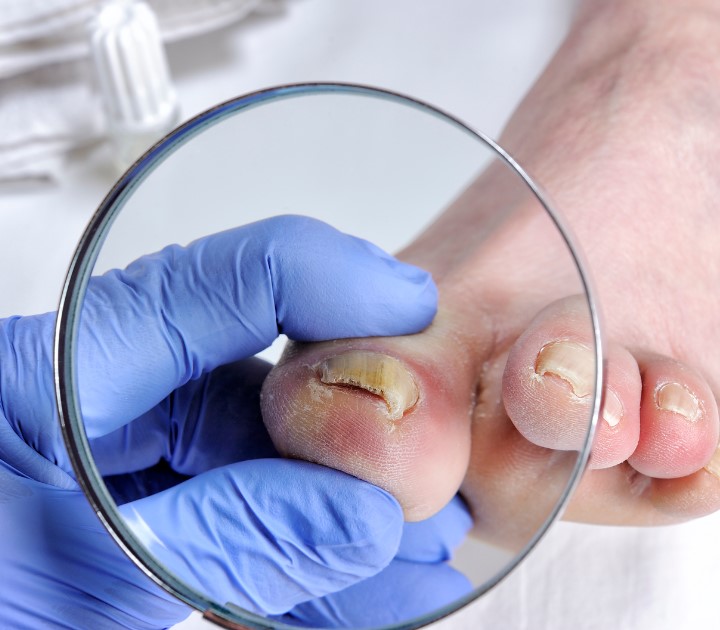
Self-care
There are a few tips you can follow that may provide some benefit when using home remedies:
- Maintain short, clean, and dry nails
- The infection nails should be clipped with one nail clipper, and the other toenails should be clipped with another
- Make sure you wear shoes that fit well and are breathable
- Wear cotton socks every day, keep your feet dry, and change your socks regularly
- Keeping your feet clean is important
- Use a communal shower with clean shower shoes
- In case of discomfort when walking due to thickened toenails, seek treatment from a podiatrist
Treatments available in medicine
If the infection is severe, the toenail may need to be removed surgically. Oral or topical antifungal medications may be prescribed.
Treatments applied topically
Depending on the severity of the infection, topical medicine may be helpful for treating it. In some cases, it may cause mild side effects, such as swelling and stinging. There are a number of topical medications available, including:
- Moorolfine
- Acyclopirox
- The drug finaconazole
- Thetaborole
Treatments administered orally
Some doctors prescribe oral medications for more severe cases. These are more effective and work faster than topical treatments. However, these pills may cause side effects.
These antifungals may require blood tests to check for any problems, so people should avoid alcohol and sun exposure while taking them. Oral treatments may include:
- An antifungal medication
- Grassofulvin
- Anitraconazole
- Isotretinoin
Therapy combined with other therapies
Antifungal treatments may be prescribed both topically and orally in some cases.
Getting in touch with a doctor when necessary
Most people do not experience significant problems with toenail fungus. However, if there is no improvement or complications arise as a result of home remedies, patients should consult with a doctor immediately and stop using them. In case a person notices discoloration, thickening, or abnormalities in their toenails, it is advisable to consult a podiatrist.
Those with diabetes or weak immune systems should also avoid home remedies for toenail fungus and seek medical treatment instead.
An overview
Toenail fungal infections are rarely treated effectively with home remedies. While some options may temporarily suppress milder infections, they are unlikely to treat the infection permanently. People should instead take prescription-strength oral and topical antifungal medications to treat the infection. Keeping their feet clean and healthy is also important.
You can contact our office at 949-588-8833 , or visit our website at https://www.ocfootdoctor.com/ Our offices are located in Laguna Hills, Irvine, Mission Viejo, Aliso Viejo, Lake Forest, Foothill Ranch, and Costa Mesa.


